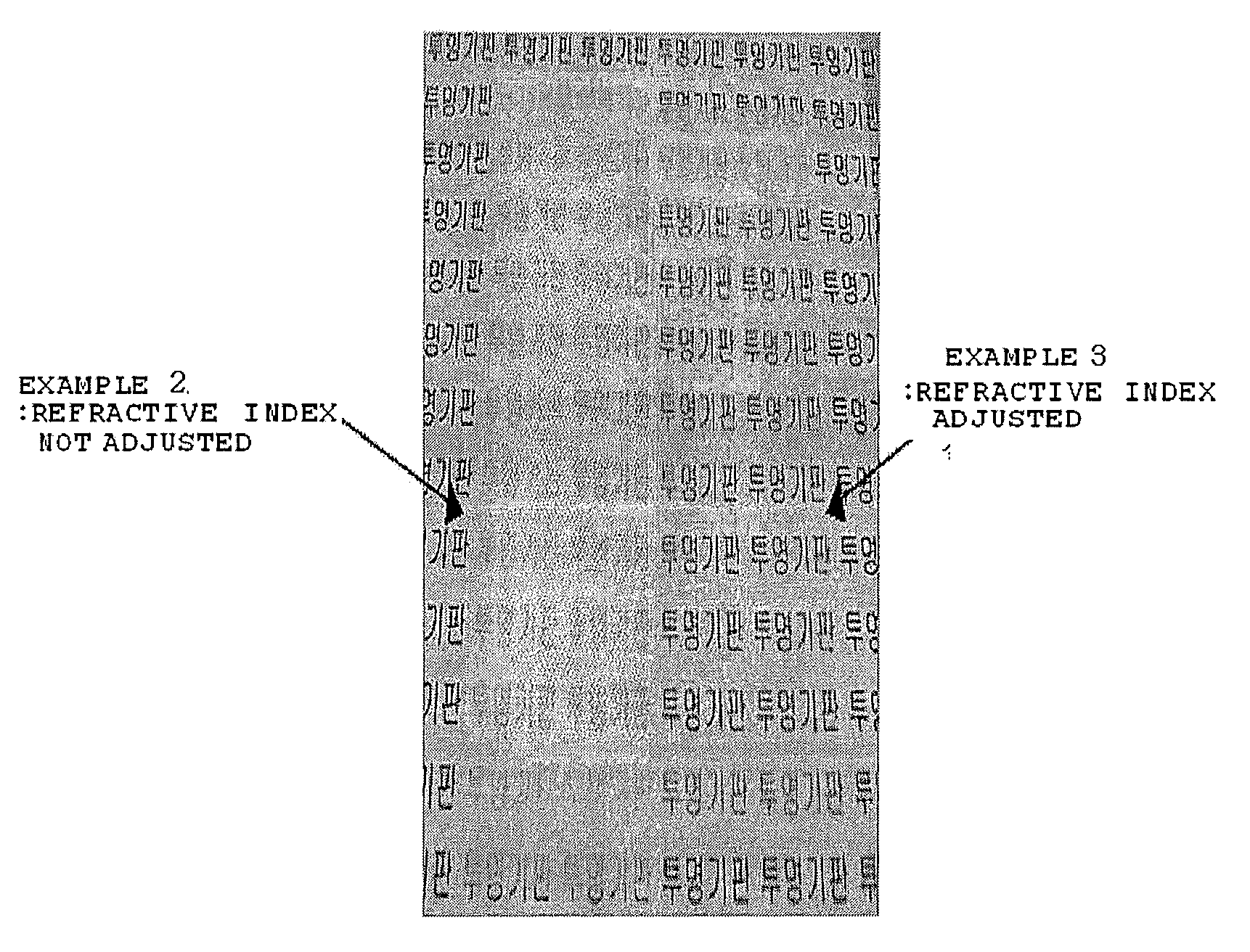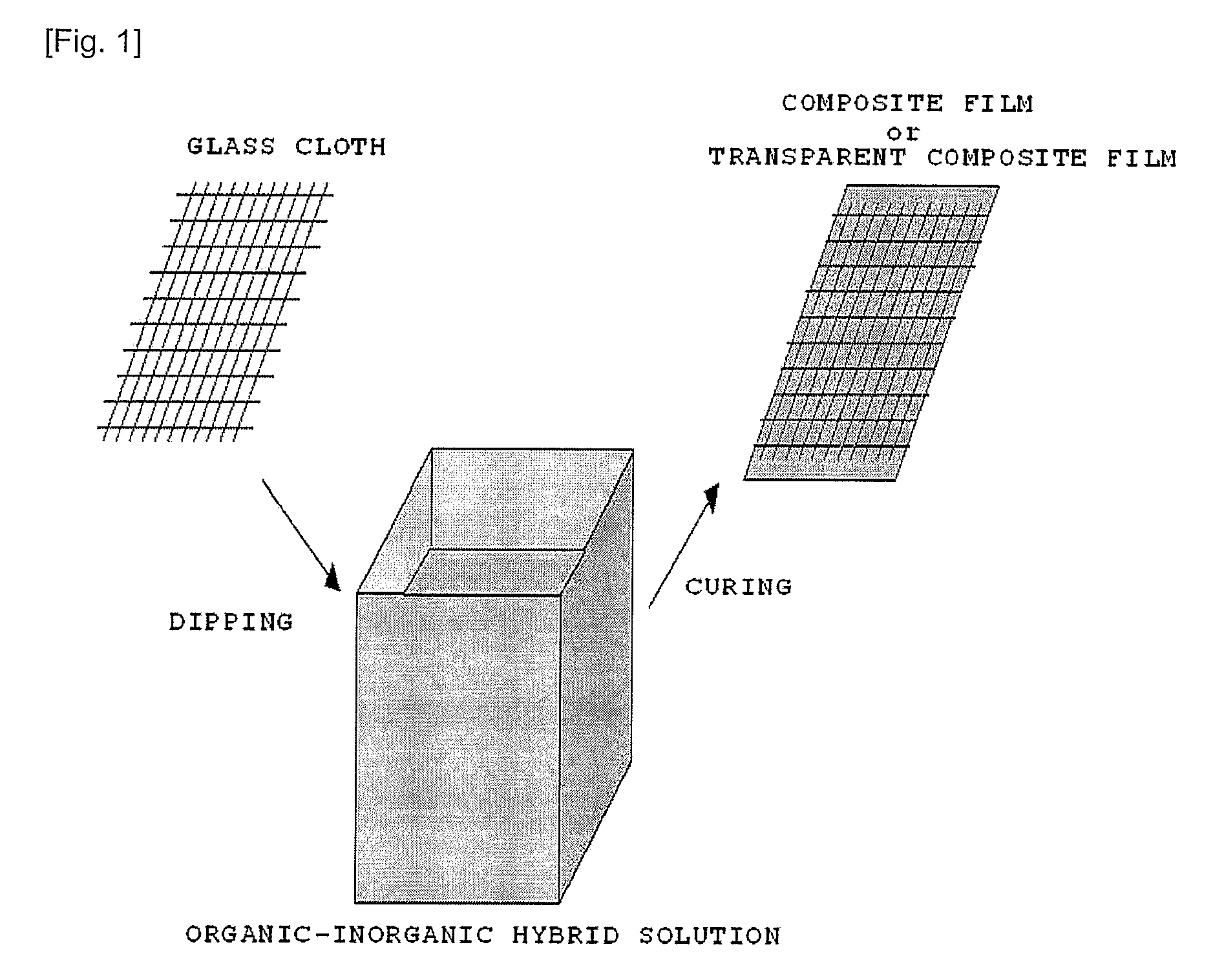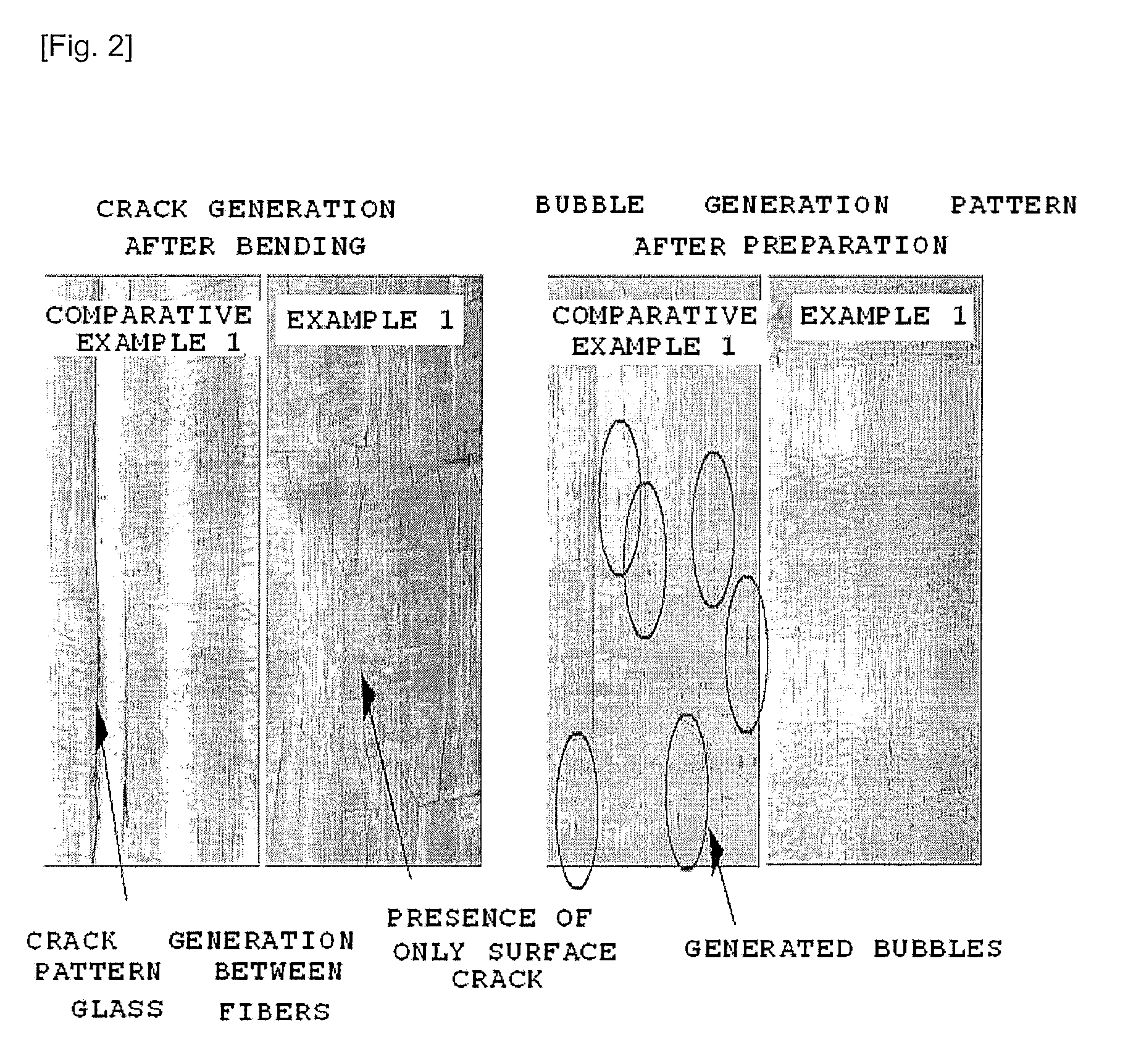Composite materials, composite film manufactured by using the same and method for manufacturing composite film
a composite film and composite material technology, applied in the direction of weaving, transportation and packaging, synthetic resin layered products, etc., can solve the problems of limited use of tightly woven glass cloth, cracks may be generated, and cracks are still generated at the interface, etc., to achieve short curing time, short curing time, and low viscosity
- Summary
- Abstract
- Description
- Claims
- Application Information
AI Technical Summary
Benefits of technology
Problems solved by technology
Method used
Image
Examples
example 1
[0100]100.0 parts by weight of diphenylsilanediol(refractive index before curing 1.513), 32.5 parts by weight of tetraethoxysilane(refractive index before curing : 1.382), 64.0 parts by weight of glycidyloxypropyltrimethoxysilane(refractive index before curing 1.429), 0.5 part by weight of aminopropyltrimethoxysilane(refractive index before curing : 1.424), 2.0 parts by weight of aluminum butoxide(refractive index before curing : 1.439, refractive index after curing : 1.7), and 1.0 part by weight of zirconium propoxide(refractive index before curing: 1.451, refractive index after curing: 2.2) were mixed together, and 80.0 parts by weight of distilled water was added thereto, followed by hydrolysis at 25° C. for 24 hrs to prepare an organic-inorganic hybrid composition in a sol state. 5 parts by weight of polyarylate was added thereto to prepare a dipping organic-inorganic hybrid composition in a sol state.
[0101]To remove organic materials on the surface, the glass cloth (thickness: ...
example 2
[0103]A composite film was manufactured in the same manners as in Example 1, except for adding no aluminum butoxide, zirconium propoxide, and polyarylate upon the preparation of the dipping organic-inorganic hybrid composition in a sol state.
example 3
[0104]100.0 parts by weight of diphenylsilanediol(refractive index before curing: 1.513), 32.5 parts by weight of tetraethoxysilane (refractive index before curing: 1.382), 64.0 parts by weight of glycidyloxypropyltrimethoxysilane (refractive index before curing: 1.429), 0.5 part by weight of aminopropyltrimethoxysilane (refractive index before curing: 1.424), 2.0 parts by weight of aluminum butoxide (refractive index before curing: 1.439, refractive index after curing: 1.7), 1.0 part by weight of zirconium propoxide (refractive index before curing: 1.451, refractive index after curing: 2.2), and 30.0 parts by weight of titaniumbutoxide (refractive index before curing: 1.49, refractive index after curing: 2.7) were mixed together, and 80.0 parts by weight of distilled water was added thereto, followed by hydrolysis at 25° C. for 24 hrs to prepare an organic-inorganic hybrid composition in a sol state. 5 parts by weight of polyarylate was added thereto to prepare a dipping organic-in...
PUM
| Property | Measurement | Unit |
|---|---|---|
| thickness | aaaaa | aaaaa |
| refractive index | aaaaa | aaaaa |
| refractive index | aaaaa | aaaaa |
Abstract
Description
Claims
Application Information
 Login to View More
Login to View More - R&D
- Intellectual Property
- Life Sciences
- Materials
- Tech Scout
- Unparalleled Data Quality
- Higher Quality Content
- 60% Fewer Hallucinations
Browse by: Latest US Patents, China's latest patents, Technical Efficacy Thesaurus, Application Domain, Technology Topic, Popular Technical Reports.
© 2025 PatSnap. All rights reserved.Legal|Privacy policy|Modern Slavery Act Transparency Statement|Sitemap|About US| Contact US: help@patsnap.com



